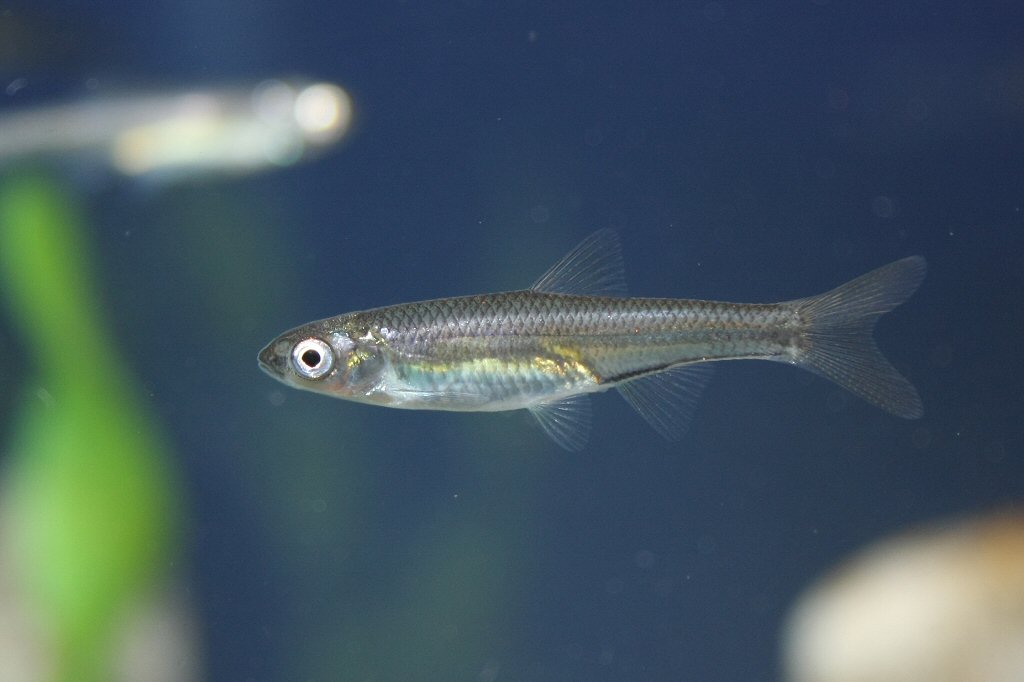Emerald shiner
(Notropis atherinoides)

Description
The emerald shiner (Notropis atherinoides) is one of hundreds of small, silvery, slender fish species known as shiners. The identifying characteristic of the emerald shiner is the silvery emerald color on its sides. It can grow to 3.5 inches in length and is found across North America from Canada to the Gulf of Mexico, commonly in large, deep lakes and rivers, though sometimes in smaller bodies of water as well. It feeds on small organisms such as zooplankton and insects, congregating in large groups near the surface of the water. It is a quite common fish and is often used as a bait fish. Emerald shiners are native to North America; they are widely distributed throughout Canada, and south to Virginia and Texas. They range to the gulf coast from Texas to Alabama, and are especially prevalent in the Mississippi Basin. Emerald shiners are most likely the most abundant fish in the Mississippi. Maximum size is 89-127 mm. Females are larger than males. Live emerald shiners are a bright, iridescent, silvery green with a silver mid-lateral band. The back and upper sides are emerald greenish to straw colored, and the ventral side of the fish is a silvery white color. The dorsal scales have pigmented margins and clear centers. The area between the nostril and the eye lacks pigment, and the lips are pigmented medially and continues to halfway down the midline of the lower jaw. The dorsal, caudal, and leading rays of the pectoral fins are lined with pigment, but the remaining fin rays and membranes are clear. The underside of the opercle are gray. There are no nuptial colors exhibited by either sex. Shiners have a slender, laterally flattened, and compressed body type. The dorsal fin is transparent, with 8 rays located right behind the insertion of the pelvic fins. They have 9-12 anal fin rays, 35-43 lateral line scales, 19-20 pre-dorsal scale rows, 14-16 pectoral fin rays, and 8-9 pelvic fin rays. The mouth is large and in the terminal and oblique position, and does not have a barbel. The pharyngeal teeth are hooked, and are in a 2, 4-4, 2 or 1, 4-4, 1 pattern. Shiners have a short and blunt snout, and the upper lip is separated from the skin of the snout by a deep groove that is continuous across the midline. The cartilaginous ridge of the lower jaw is not very evident. Living in freshwater, emerald shiners are benthopelagic. They live in large open rivers, lakes, and reservoirs.
Taxonomic tree:







